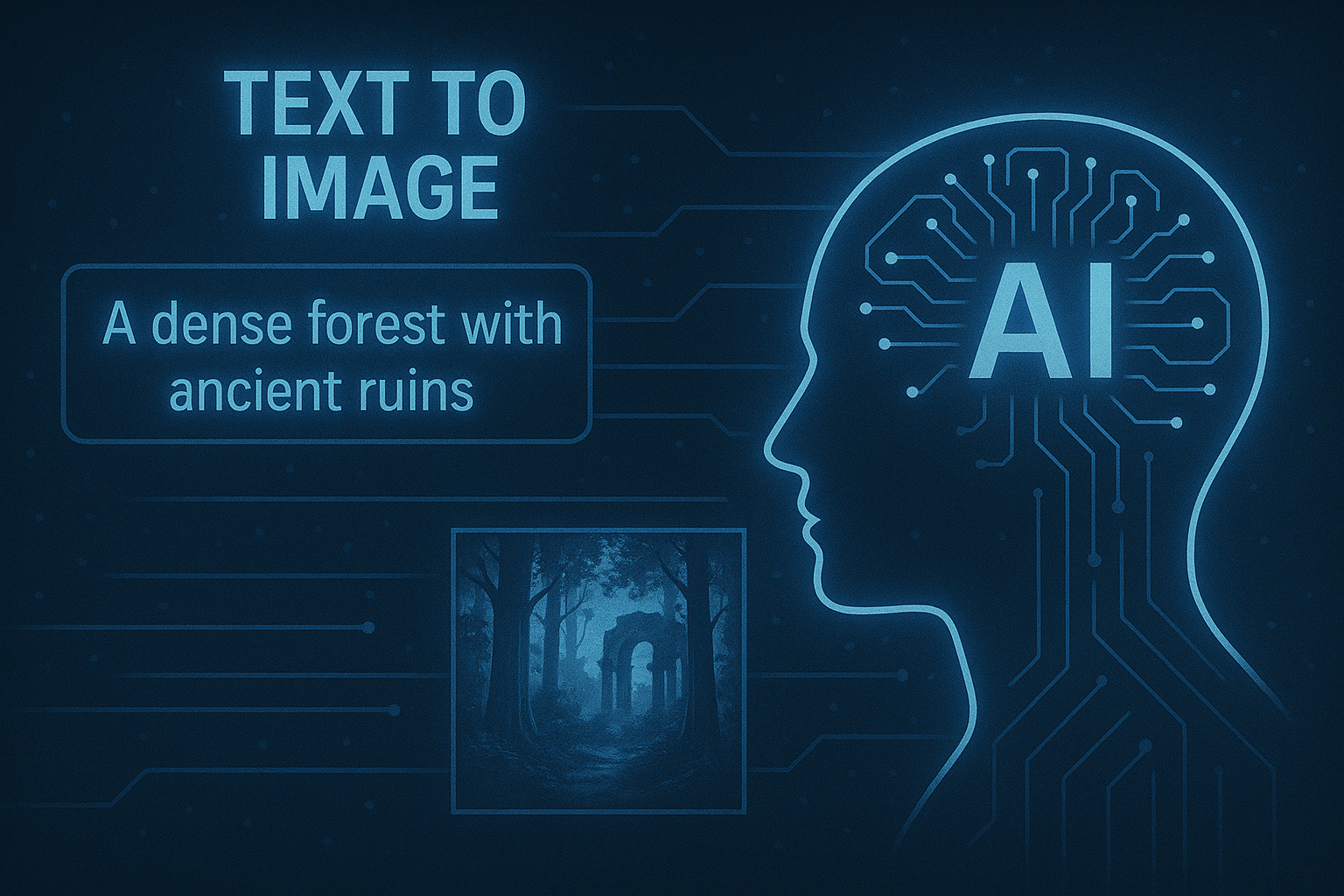Ever wondered how typing “a golden retriever wearing sunglasses on a skateboard” can magically produce a photorealistic image in seconds? Let’s pull back the curtain on one of AI’s most impressive tricks.
The Magic Isn’t Actually Magic
When you type a text prompt into DALL-E, Midjourney, or Stable Diffusion, you’re witnessing the result of years of breakthrough research in machine learning. But the process that transforms your words into pixels is far more systematic than it appears.
Think of it like teaching a computer to dream in reverse. Instead of random dream imagery, the AI starts with pure noise—like TV static—and systematically removes that noise while being guided by your text description.
The Two-Part Training Journey
Part 1: Learning What Things Look Like
Before any image generation can happen, these AI systems go through massive training on millions of image-text pairs. Imagine showing someone billions of photos with detailed captions:
- “A red apple on a wooden table”
- “Sunset over a mountain range with purple clouds”
- “A businessman in a blue suit walking down a city street”
The AI doesn’t just memorize these images—it learns the underlying patterns. It figures out that “red” often appears as certain pixel values, that “mountains” have particular shapes and textures, and that “businessmen” typically wear certain types of clothing.
This creates what researchers call a “latent space”—essentially a mathematical map where similar concepts cluster together. In this space, “dog” and “puppy” are close neighbors, while “dog” and “airplane” are far apart.
Part 2: Learning to Remove Noise
Here’s where it gets fascinating. During training, the AI takes clean images and deliberately adds random noise to them—like gradually turning a clear photo into TV static. Then it learns to reverse this process, removing noise step by step to recover the original image.
But here’s the crucial part: during this denoising process, the AI is also shown the text description of what the image should contain. This teaches it to remove noise in a way that’s guided by language.
The Generation Process: From Chaos to Creation
When you type a prompt, here’s what actually happens:
Step 1: Understanding Your Words
The AI converts your text into mathematical representations using what’s called a text encoder. “Golden retriever” becomes a set of numbers that capture not just the literal words, but their meaning and relationships.
Step 2: Starting with Pure Noise
The system begins with a canvas of complete random noise—imagine TV static in the shape of your desired image.
Step 3: Guided Denoising
Now comes the magic. The AI removes noise in tiny steps, but each step is influenced by your text prompt. It’s like having an artist gradually sketch an image while constantly referring to your description.
If your prompt says “golden retriever,” the denoising process will favor removing noise in ways that reveal dog-like shapes, golden colors, and fur textures. The AI has learned from millions of examples that these visual elements typically go together with those words.
Step 4: Progressive Refinement
This happens over dozens of steps. Early steps establish basic composition and shapes. Later steps add fine details, textures, and lighting. Each step makes the image slightly less noisy and slightly more aligned with your prompt.
Why This Approach Works So Well
This diffusion-based method is brilliant for several reasons:
Flexibility: Since the AI learns patterns rather than memorizing specific images, it can combine concepts in novel ways. It can imagine a “robot playing violin in space” even if it never saw that exact combination during training.
Quality Control: The step-by-step process allows for high-quality results. Rather than trying to generate a perfect image all at once, the AI refines its work gradually.
Prompt Responsiveness: Because text guidance influences every denoising step, the final image closely follows your description.
The Hidden Complexity
What makes this even more impressive is how much the AI must understand about our visual world:
- Physics: It knows that shadows fall in certain directions and that water reflects light
- Composition: It understands visual balance, perspective, and artistic principles
- Context: It realizes that “beach” implies sand, waves, and probably sunny weather
- Style: It can distinguish between photorealistic, cartoon, oil painting, and dozens of other artistic styles
Current Limitations and Future Directions
Despite their impressive capabilities, these systems still struggle with:
- Text within images: Generating readable signs or book covers remains challenging
- Complex spatial relationships: “The red ball on top of the blue box to the left of the green cylinder” can confuse even advanced models
- Consistency: Generating multiple images of the same character or scene with consistent details
- Fine details: Hands, faces, and intricate textures still require careful prompting
Researchers are actively working on these challenges, with new architectures and training methods emerging regularly.
The Broader Implications
Understanding how image generation AI works helps us appreciate both its capabilities and limitations. These systems aren’t just randomly assembling pixels—they’re applying learned visual knowledge guided by language understanding.
This technology is already transforming industries from advertising to game development, and we’re still in the early stages. As these systems become more sophisticated, the line between human and AI-generated visual content will continue to blur.
The next time you generate an image from text, remember: you’re witnessing the result of training on billions of images, mathematical representations of visual concepts, and a carefully orchestrated dance between noise and meaning. Pretty magical, even when you know how the trick works.
Want to experiment with image generation AI yourself? Try starting with specific, detailed prompts and gradually experiment with different styles and compositions. The more you understand what these systems can do, the better you’ll become at crafting prompts that produce exactly what you envision.


Leave a Reply